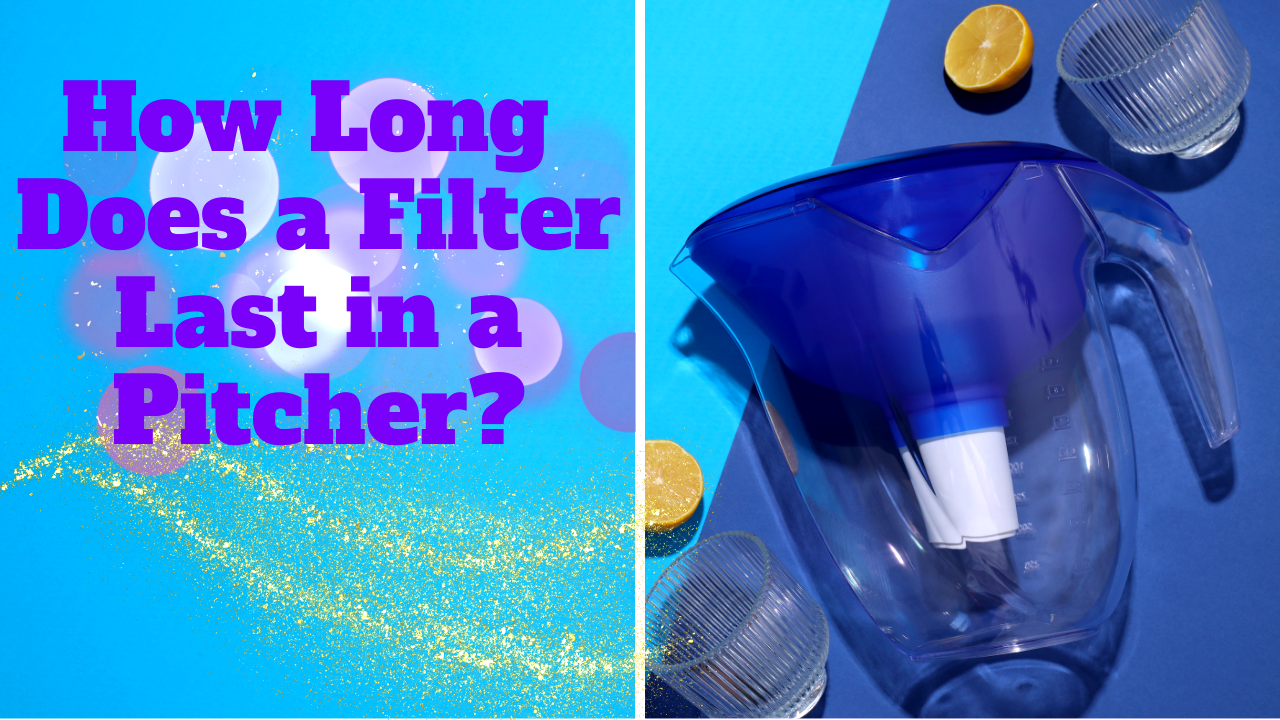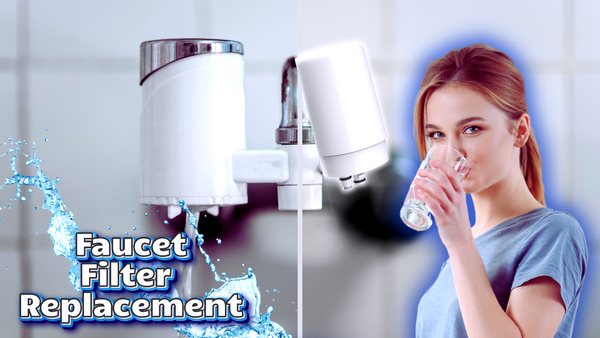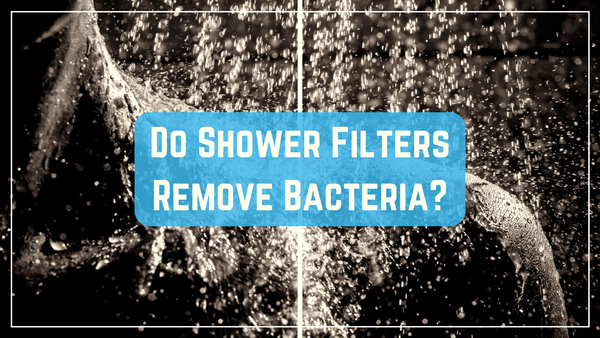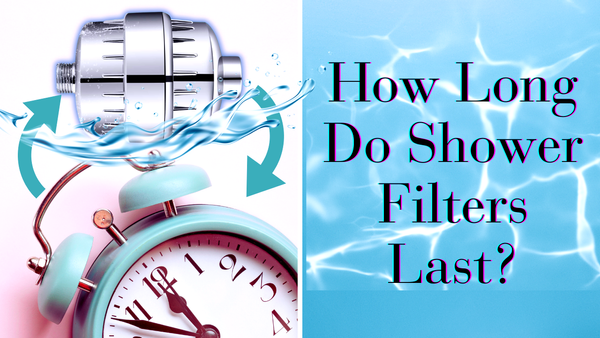Key Takeaways:
- Filter Lifespan: The lifespan of a pitcher filter varies depending on usage, water quality, and the type of filter used.
- Indicators: Electronic filter change indicators and visual cues help determine when to replace the filter.
- Maintenance: Regular maintenance and proper usage can extend the life of your filter.
Ever wondered, "How long does a filter last in a pitcher?" If you're using a Brita pitcher or any other water filter pitcher, understanding the lifespan of your filter is crucial for ensuring you always have clean, filtered water. Let's dive into the nitty-gritty of filter life, maintenance, and the factors that influence your filter's length.
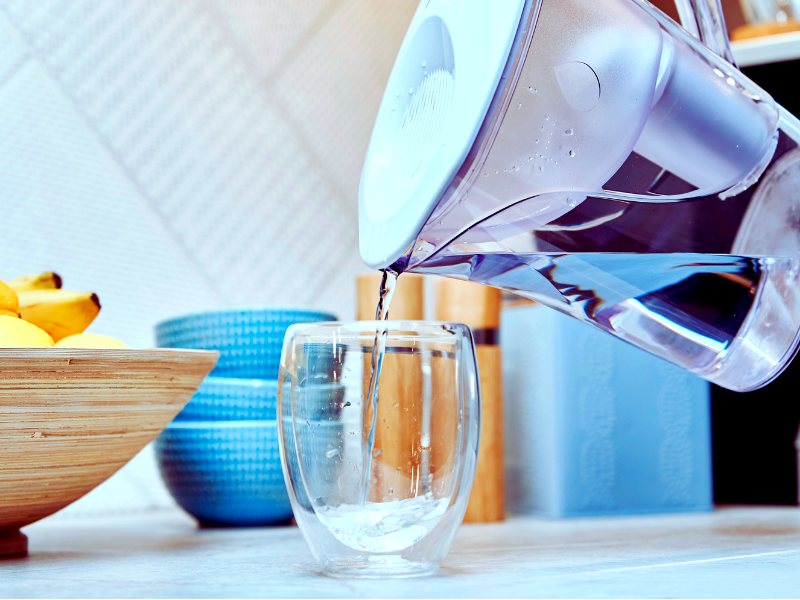
Filter Lifespan
Filter life in a pitcher can vary greatly. A standard Brita filter lasts about two months or 40 gallons of water. But this can change depending on your tap water quality and how often you use the pitcher. If you have hard water or water with high levels of contaminants, you may need to replace your filter more often.
Different filters have different lives. For example, Brita’s Longlast filters last up to 6 months or 120 gallons. Check the manufacturer’s guidelines for your specific filter to get an accurate estimate of its life. Monitor your filter’s performance to know when to replace it.
Electronic Filter Change Indicators
Many water filter pitchers, including Brita pitchers, have electronic filter change indicators. These nifty devices take the guesswork out of knowing when to replace your filter. The indicator uses a green, yellow, and red light system to show the filter’s status. Green means the filter is good, yellow means it’s getting close to the end of life, and red means it’s time to change the filter.
For example, Brita’s electronic indicator is easy to use. Simply press the status button, and the light will blink to show the filter’s condition. This way, you’ll always have clean filtered water without having to remember when you last changed the filter.
Factors Affecting Filter Life
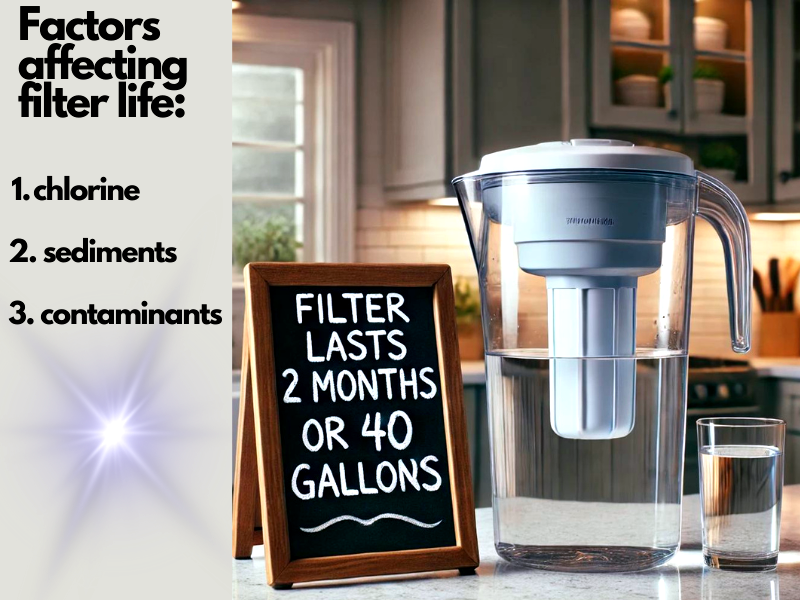
Several things can affect how long your filter lasts. Tap water quality is a big one. If your water has high chlorine, sediment, or other contaminants, your filter will work harder and need to be replaced more often. The amount of water you filter daily also affects the filter’s life. Heavy usage means the filter will reach its capacity sooner.
Another factor is the type of filter you use. Standard filters like those in Brita pitchers last about two months. Advanced filters like Brita’s Longlast filters last up to 6 months. Please choose the right filter for you and monitor its performance.
Proper Maintenance and Usage
Proper maintenance and usage can extend the life of your filter. Always follow the manufacturer’s instructions for installation and replacement of the filter. Before using a new filter, flush it with cold tap water to remove any carbon dust. This step ensures optimal filter performance and no unpleasant taste or odor in your filtered water.
Clean your pitcher regularly. Use mild detergent and cold water to clean the reservoir, lid, and other parts of the pitcher. This will prevent the buildup of contaminants and ensure your filter works efficiently. Always fill your pitcher to the max fill line so as not to overwork the filter.
Recognizing When to Replace Your Filter
Knowing when to replace your filter is key to water quality. Besides electronic indicators, there are other signs to look out for. If you notice a change in the taste or odor of your filtered water, it’s time to replace the filter. A decrease in the water flow rate also means the filter is clogged and needs to be changed.
For example, if your Brita pitcher starts producing water with a chlorine taste or odor, it’s a clear sign the filter is no longer working. Check these signs regularly so you always have clean, great-tasting water.
Different Types of Filters
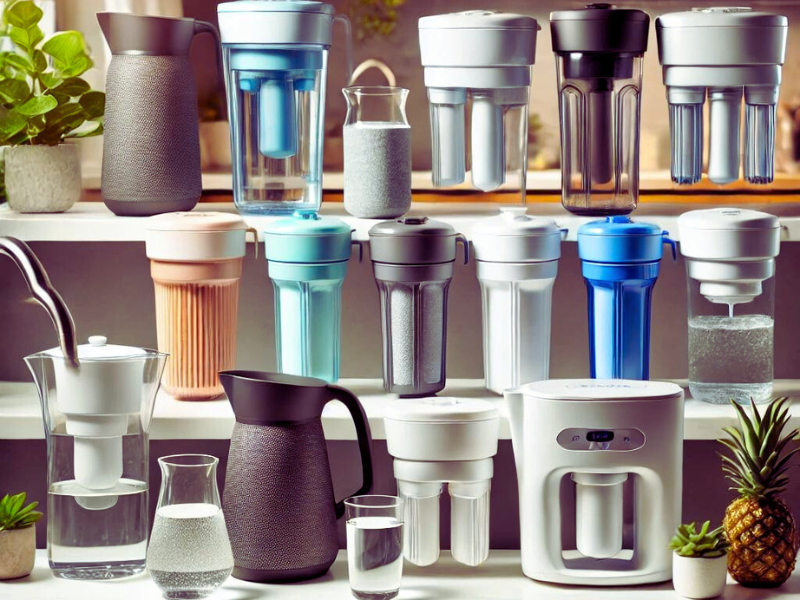
Water filter pitchers have different filters, each designed to remove specific contaminants. Standard filters like those in Brita pitchers use granular activated carbon to remove chlorine, sediment, and other impurities. These filters are good for improving the taste and odor of tap water.
Advanced filters like Brita’s Longlast filters have more advanced filtration capabilities. They can remove more contaminants like lead and asbestos and have a longer life. Choose the right filter for you and get the best water quality.
The Importance of Water Quality
Water quality affects how long your filter will last. Municipal tap water can vary greatly in terms of contaminants and hardness. For example, fluoridated municipal tap water may need more frequent filter changes because of higher fluoride levels and other chemicals.
Test your tap water regularly to know its quality and choose the right filter. If you live in an area with hard water, you may need to replace your filter more often to maintain optimal performance.
Extending Filter Life
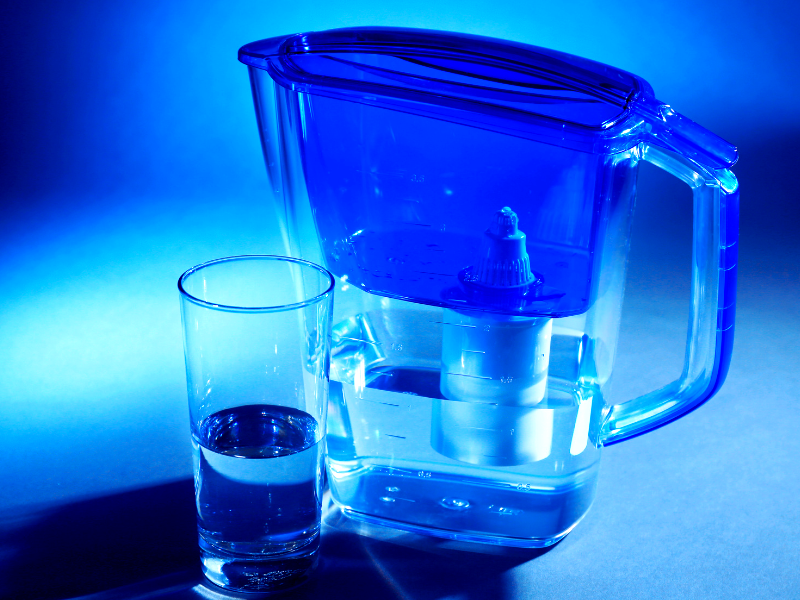
There are several ways to extend the life of your filter. One effective method is to pre-filter your tap water using a faucet-mounted filter before filling your pitcher. This step reduces the workload on your pitcher filter and can prolong its lifespan.
Another tip is to store your pitcher in a cool, dry place when not in use. Avoid exposing it to direct sunlight or extreme temperatures, as this can affect the filter's performance. Regularly cleaning the pitcher and following the manufacturer's guidelines also helps ensure your filter lasts as long as possible.
The Role of Electronic Indicators
Electronic indicators are a game-changer for water filter pitchers. They provide a convenient way to monitor your filter's status and ensure you always have clean water. For example, Brita's electronic indicator system uses a simple light system to show the filter's condition. A green light means the filter is still good, yellow indicates it's nearing the end of its life, and red means it's time to replace the filter.
These indicators take the guesswork out of filter maintenance and help you stay on top of your filter changes. Regularly checking the indicator ensures you never run out of clean, filtered water.
Common Issues and Solutions
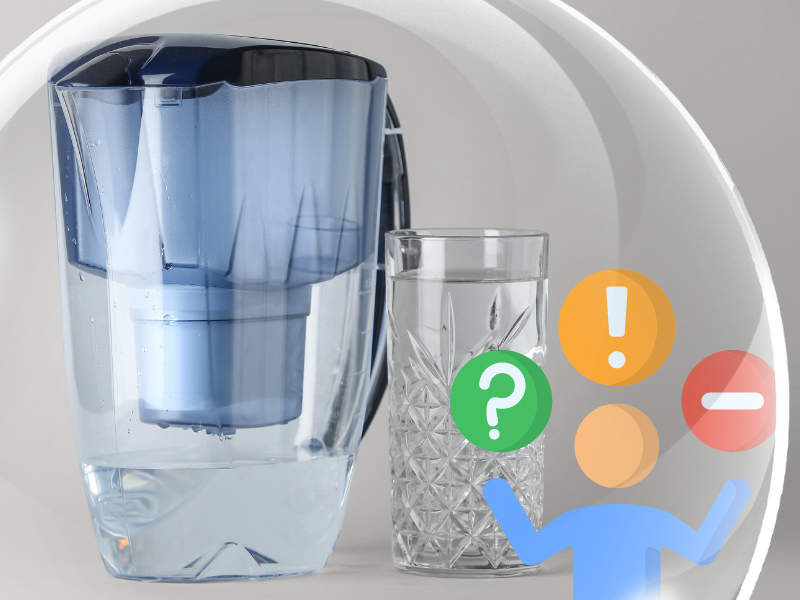
Several common issues can affect the performance of your water filter pitcher. One common problem is a slow water flow rate. This issue can occur if the filter is clogged with contaminants. To resolve this, replace the filter and ensure you regularly clean the pitcher.
Another issue is a change in the taste or odor of the filtered water. This problem often indicates that the filter is no longer effective and needs to be replaced. Regularly monitoring your filter's performance and using electronic indicators can help prevent these issues.
Summary
Understanding how long a filter lasts in a pitcher is essential for maintaining clean, great-tasting water. The lifespan of a filter can vary based on several factors, including water quality, usage, and the type of filter used. Electronic filter change indicators and regular maintenance can help ensure your filter performs optimally and lasts as long as possible.
FAQ
How often should I change my Brita filter?
A standard Brita filter should be changed every two months or 40 gallons of water. But this can vary depending on your water quality and usage. Brita’s Longlast filters can last up to 6 months or 120 gallons.
Can I use my Brita pitcher without the electronic indicator?
Yes, you can use your Brita pitcher without the electronic indicator. However, the indicator makes it easy to monitor your filter’s condition and always have clean water. Without it, you’ll have to keep track of your filter changes manually.
What if my filtered water tastes of chlorine?
If your filtered water tastes of chlorine, it means the filter is no longer effective and needs to be replaced. Follow the manufacturer’s instructions to replace the filter and clean your pitcher regularly to maintain optimal performance.
